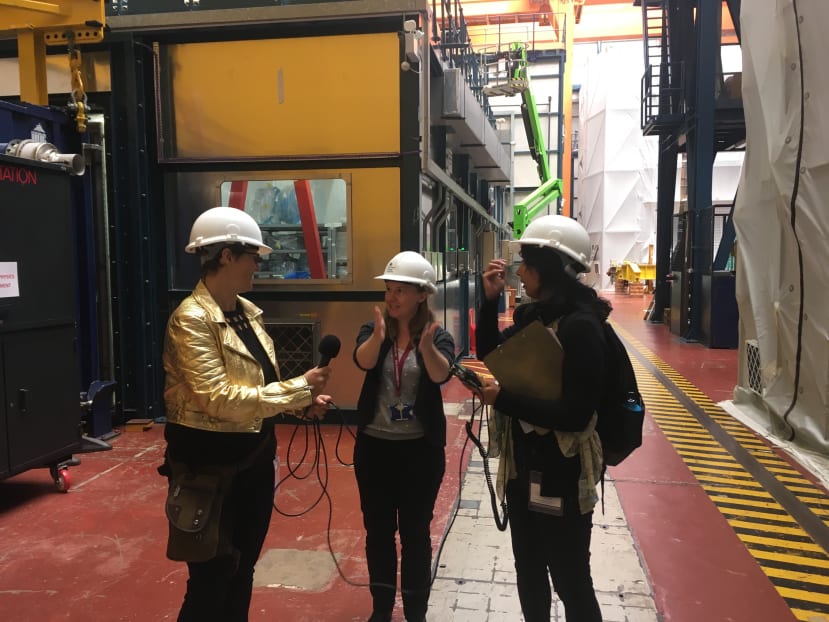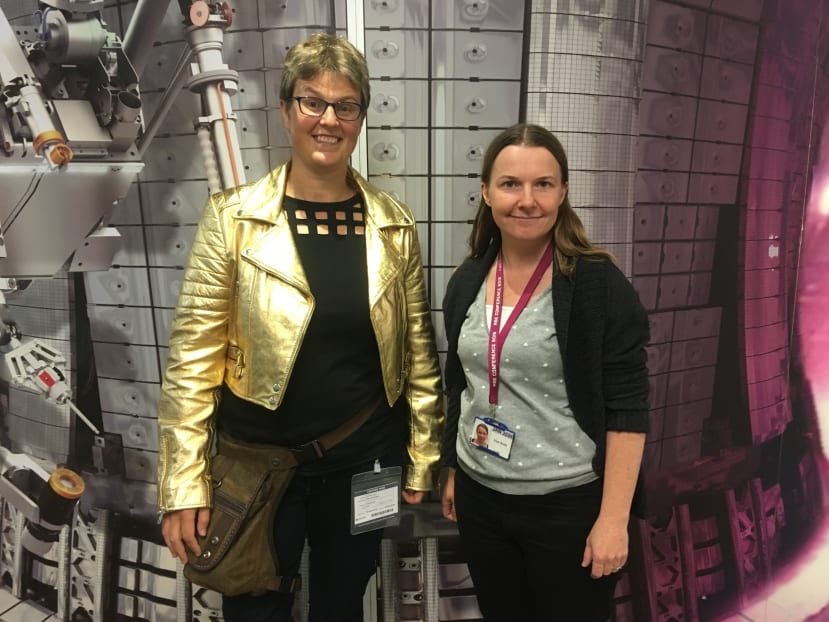Fusion uses everyday technology?
Follow articleHow do you feel about this article? Help us to provide better content for you.
Thank you! Your feedback has been received.
There was a problem submitting your feedback, please try again later.
What do you think of this article?
Everything about Fusion Energy is rather exciting and different – so when I went to Culham Centre for Fusion Energy last summer I wasn't quite sure what to expect – nor how everyday technology could be used – it all seemed like it should be bespoke.
Alys Brett, the Head of the Software Engineering Group showed me around. Part of her group is responsible for making the data from JET available to scientists and engineers. Some of the diagnostic systems and sensors are 40 years old – some bespoke, and some off the shelf. One of her team's major challenges is to take all the different formats of data coming in from the sensors – and turn it into something that the scientists and engineers can actually use. This is a major undertaking, as there are over 60,000 data streams coming in during each pulse – a part of the total experimental campaign. And each of those data streams themselves contains a lot of data.
Back in 1983, there was 172kb of data per pulse. By 2014 it was 35GB per pulse. Today it's up to 70GB of data per pulse. Now that's BIG DATA.
The data comes from the many, many sensors to local PC's. It is then transferred to computer subsystems and then the data is written on to long term storage – the kind of hard drive you can buy for home use – one rack had 80 1TB hard drives in it. It then needs to be used, so it's not just left there – it needs to be accessed, so the overall goal, the understanding of the experiment can be achieved.
The server room looks pretty much like a computer server room anywhere. Racks of hard drives and blinky lights.
However, some places looked more "engineering-y" than science laboratory! Alys Bret is seen here explaining something to producer Becky Singh and me.
Tokomak is a Russian acronym for either a toroidal chamber with magnetic coils or a toroidal chamber with an axial magnetic field. It's really a huge doughnut shape – slightly squished.
Although I'd like to claim to be *inside* the Tokomak, here Alys Brett and I are actually in front of a life-sized photo of it. This is the view (without the pink bit) that I got from the "training" area – where the robot was holding a spanner. Looking at the size of it, you can see why they need so many sensors to keep track of everything.
In the Assembly Hall – behind the big yellow door is the hottest thing in our solar system! (Plasmas in JET are up to 150 million degrees Celsius – even hotter than the Sun). My producer, Becky Singh, and I are about 20m away from it!
The scientist on duty in the JET control room on the day of my visit was Fernanda Rimini. She is head of the Plasma Operations unit and one of the most experienced session leaders who configure and run the JET pulses. She kindly took the time to explain how the whole system worked and everything that was happening or going to happen in the Control Room, as well as what the different roles were. (Scientists on one side of the room, engineers on the other).
I've since discovered that in her spare time she also makes lego creations – such as this excellent stop-motion animation of the control room at JET during a pulse. There's an interview about her lego creations here.
The whole JET facility cost over a £billion – but all the data is just stored on normal hard drives. Everyday technology, giving fusion energy the engineering edge.
Go behind the scenes at the Culham Centre for Fusion Energy with me in the latest episode of DesignSpark's podcast, The Engineering Edge.




